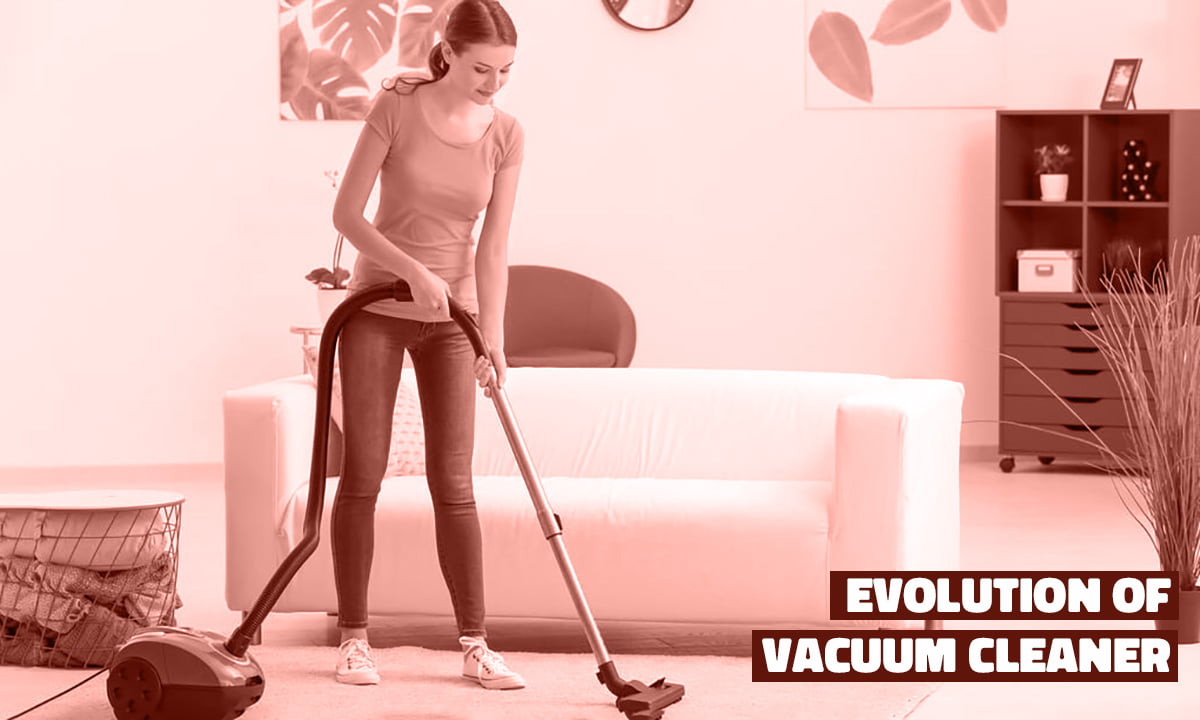Vacuum cleaners have become an indispensable tool in modern households, revolutionising cleaning practices and making day-to-day chores more manageable. However, the journey of vacuum cleaners began long ago, with the invention of the carpet sweeper by Daniel Hess in 1860 marking the starting point of a remarkable evolution in cleaning technology.
As we delve into the history of vacuum cleaners, we will explore the early innovations that paved the way for the modern smart technology we use today. From basic carpet sweepers to advanced robotic cleaners, each stage of development has contributed to the efficiency and convenience of maintaining clean living spaces.
Table of Contents
Early Innovations (1860-1900)
The evolution of vacuum cleaners can be traced back to the humble beginnings of the carpet sweeper. In 1860, Daniel Hess patented the first mechanical carpet sweeper, which utilized bellows to create suction and remove dust and debris from floors. While Hess’ invention laid the foundation for future advancements in cleaning technology, it was Ives McGaffey who introduced the “Sweeping Machine” in 1869. This manual device featured a hand-crank operation, making it easier for users to clean their homes effectively.
One notable advancement in vacuum cleaner technology came in 1901 with the invention of a large, petrol-powered vacuum cleaner by H. Cecil Booth. While Booth’s creation was a significant step forward, its size and reliance on gasoline limited its practicality for everyday household use.
Advancements in Household Cleaning (1900-1950)
The early 20th century saw notable advancements in household cleaning technology, particularly with the contributions of inventors like Hubert Cecil Booth and James Murray Spangler. Booth’s electric-powered vacuum cleaner, introduced in the early 1900s, marked a critical turning point in the evolution of vacuum cleaners. This innovation made cleaning more efficient and accessible to a wider audience.
James Murray Spangler’s invention of the first portable electric vacuum cleaner in 1907 further transformed the cleaning landscape. Spangler’s device, which featured a rotating brush and suction mechanism, laid the groundwork for the portable vacuum cleaners we use today. These early innovations eventually led to the establishment of the Hoover Company, which played a pivotal role in popularizing vacuum cleaners in households across the world.
The Post-War Era and Technological Innovations (1950-2000)
Following World War II, the vacuum cleaner industry experienced significant technological advancements that shaped the way we clean our homes. Disposable vacuum bags became a common feature in vacuum cleaners, allowing for easier maintenance and improved hygiene. Longer cords were introduced to provide users with more flexibility and convenience during cleaning sessions.
Moreover, manufacturers began implementing standardized components and modular designs in vacuum cleaners, making repairs and replacements simpler for users. This shift towards user-friendly designs contributed to the longevity and usability of vacuum cleaners, enhancing their practicality in everyday life.
In the late 20th century, the emergence of bagless models marked another milestone in vacuum cleaner innovation. These models eliminated the need for disposable bags, offering a more sustainable and cost-effective cleaning solution. Additionally, robotic vacuum cleaners entered the market, offering automated cleaning capabilities that revolutionized the way we approach household chores.
The Cordless Age and Smart Technology (2000-Present)
The dawn of the 21st century brought about further advancements in vacuum cleaner technology, with the introduction of cordless vacuums revolutionizing the cleaning experience. Cordless models provide users with increased mobility and convenience, enabling them to clean hard-to-reach areas without the restrictions of cords and cables.
Moreover, smart technology infiltrated the vacuum cleaner industry, giving rise to robotic cleaners equipped with advanced features such as scheduling and self-emptying functions. These smart vacuum cleaners utilize sensors and programming to navigate and clean spaces autonomously, saving users time and effort in maintaining clean homes.
While the integration of smart technology has heightened the efficiency and convenience of vacuum cleaners, traditional upright and canister models continue to remain popular choices for consumers. The diversity in vacuum cleaner options caters to varying cleaning needs and preferences, ensuring that there is a suitable solution for every household.
Conclusion
The evolution of vacuum cleaners from the simple carpet sweepers of the 19th century to the sophisticated smart technology of today exemplifies the constant innovation and adaptation within the cleaning industry. Vacuum cleaners have undoubtedly revolutionized household cleaning practices, making it easier and more efficient to maintain clean and healthy living spaces.
Looking ahead, the future of vacuum cleaner technology holds exciting possibilities, with potential advancements in sustainability, efficiency, and connectivity on the horizon. As technology continues to evolve, we can expect further enhancements that will further streamline the cleaning process and enhance the overall cleaning experience for users worldwide.
By understanding the rich history and evolution of vacuum cleaners, we gain a deeper appreciation for the devices that have become an integral part of our daily lives, transforming the way we approach cleanliness and hygiene in our homes.
Types of Vacuum Cleaners and Their Uses
Vacuum cleaners come in various shapes, sizes, and designs, each catering to specific cleaning needs and preferences. Understanding the different types of vacuum cleaners and their uses can help you choose the best option for your home. Here are some common types of vacuum cleaners:
1. Upright Vacuum Cleaners:
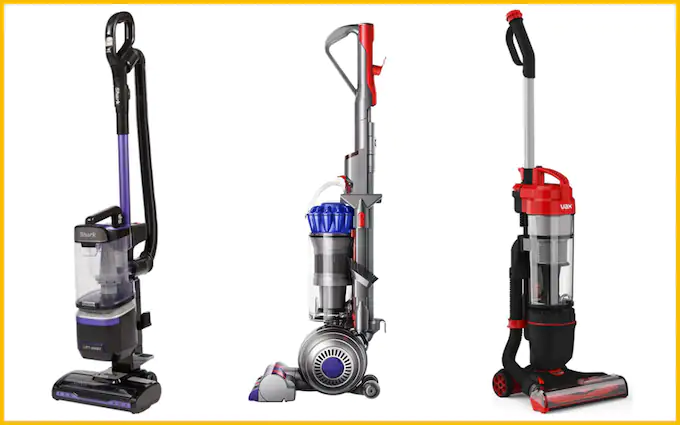
**Uses:** Upright vacuum cleaners are popular for their ease of use and power. They are ideal for cleaning carpets and large areas efficiently. The upright design makes them convenient for quick and thorough cleaning sessions.
**Features:**
– Typically come with rotating brushes for deep cleaning.
– Suitable for homes with carpeted floors.
– Often equipped with attachments for cleaning upholstery and hard-to-reach areas.
2. Canister Vacuum Cleaners:
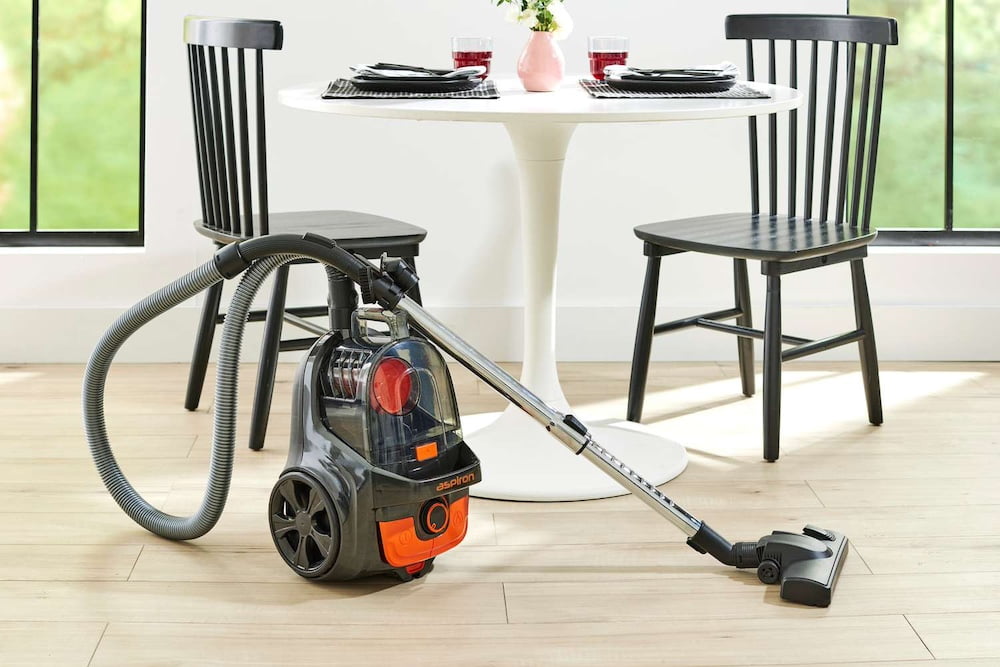
**Uses:** Canister vacuum cleaners are versatile and suitable for various surfaces, including hardwood floors, tiles, and carpets. Their compact design and maneuverability make them ideal for cleaning stairs and tight spaces.
**Features:**
– Consist of a canister and a wand with a brush head attachment.
– Lightweight and easy to move around.
– Ideal for homes with a combination of different flooring types.
3. Stick Vacuum Cleaners:
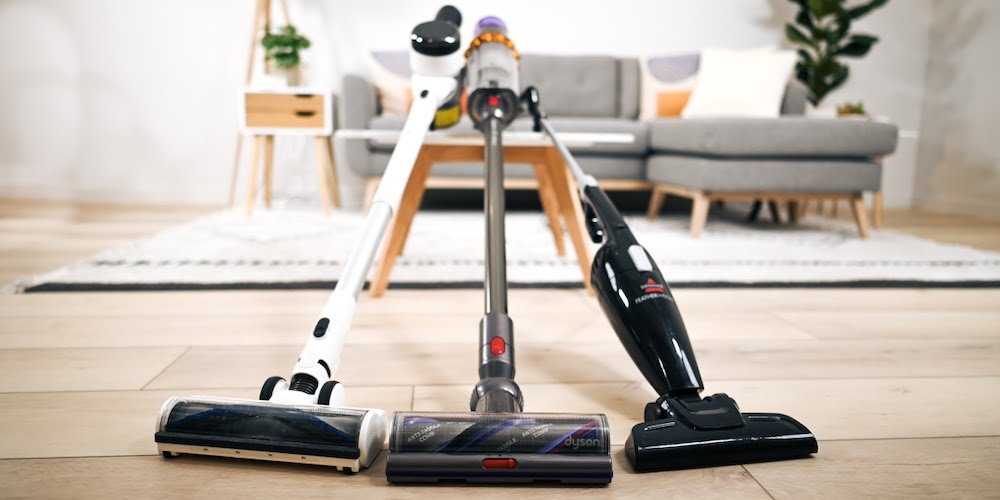
**Uses:** Stick vacuum cleaners are lightweight and slim, making them perfect for quick clean-ups and tight spaces. They are suitable for light-duty cleaning and are convenient for daily maintenance.
**Features:**
– Slim and lightweight design for easy maneuverability.
– Ideal for hard floors, light carpets, and quick spot cleaning.
– Suitable for smaller living spaces and apartments.
4. Handheld Vacuum Cleaners:
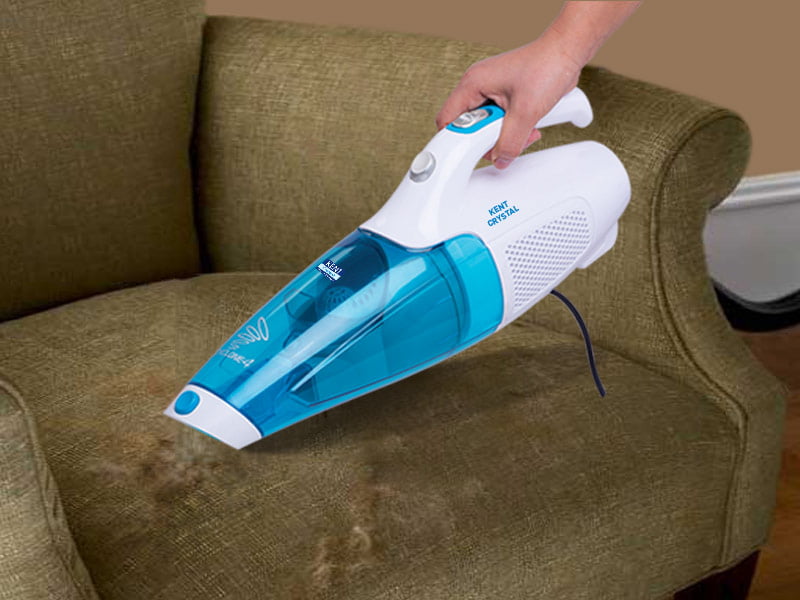
**Uses:** Handheld vacuum cleaners are compact and portable, designed for quick and targeted cleaning tasks. They are perfect for cleaning upholstery, car interiors, and small messes.
**Features:**
– Compact and lightweight for easy handling.
– Ideal for quick clean-ups in tight spaces.
– Often cordless for enhanced mobility.
5. Robot Vacuum Cleaners:
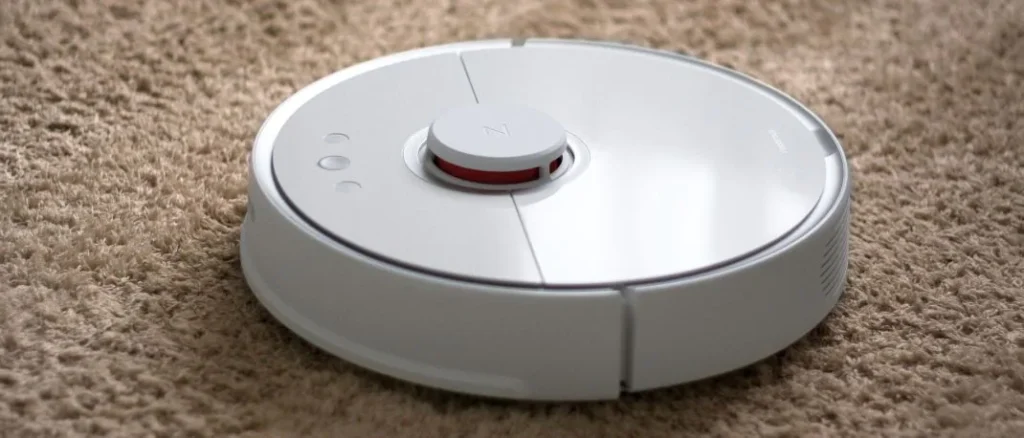
**Uses:** Robot vacuum cleaners offer automated cleaning solutions, navigating and cleaning spaces autonomously. They are ideal for busy individuals or those looking for hands-free cleaning options.
**Features:**
– Equipped with sensors for navigation and obstacle detection.
– Programmable scheduling for automated cleaning.
– Self-charging capabilities for continuous use.
6. Handstick Vacuum Cleaners:
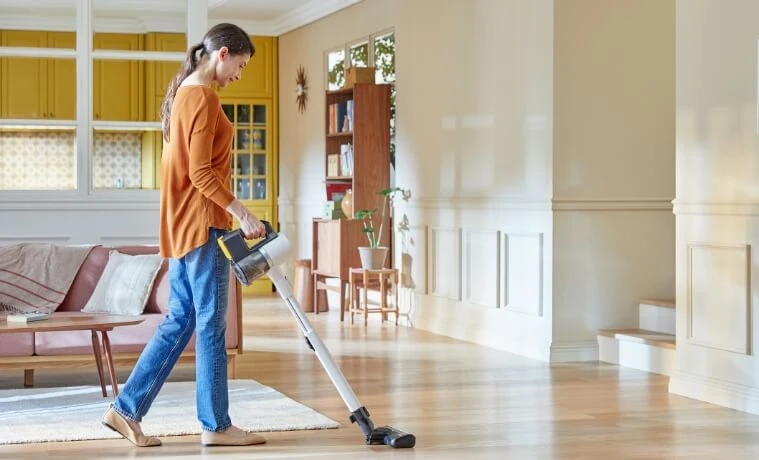
**Uses:** Handstick vacuum cleaners combine the maneuverability of a stick vacuum with the convenience of a handheld device. They are versatile and efficient, suitable for various surfaces and quick clean-ups.
**Features:**
– Lightweight and versatile design for multi-surface cleaning.
– Detachable components for handheld or stick use.
– Ideal for quick clean-ups and spot cleaning.
Choosing the Right Vacuum Cleaner
When selecting a vacuum cleaner for your home, consider factors such as your cleaning needs, floor types, and storage space. Each type of vacuum cleaner offers unique features and benefits suited to different cleaning requirements. By understanding the distinctions between vacuum cleaner types, you can make an informed decision that aligns with your cleaning preferences and lifestyle.
Maintenance and Care Tips for Vacuum Cleaners
Proper maintenance and regular care are essential for ensuring the longevity and optimal performance of your vacuum cleaner. By following these maintenance tips, you can extend the lifespan of your appliance and maintain its efficiency over time.
1. Regularly Empty the Dust Bin or Replace the Bag:
– **Bagged Vacuums:** If you have a vacuum cleaner that uses disposable bags, replace them when they are full to prevent loss of suction and maintain airflow.
– **Bagless Vacuums:** Empty the dust bin frequently to prevent clogs and maintain suction power.
2. Clean or Replace Filters:
– Check the filters regularly and clean or replace them according to the manufacturer’s instructions. Clean filters ensure proper air circulation and prevent dust buildup in the vacuum cleaner.
3. Check and Clean Brushes and Attachments:
– Inspect the brushes and attachments for any debris or tangled hair regularly. Clean them to prevent blockages and maintain the effectiveness of the cleaning process.
4. Monitor and Clean the Vacuum’s Wheels and Rollers:
– Check the wheels and rollers for any obstructions or debris that may impede movement. Clean them to ensure smooth operation and efficient cleaning.
5. Clear Blockages and Maintain Suction Power:
– Regularly check the vacuum cleaner’s hoses, tubes, and pathways for blockages or clogs. Clear any obstructions to maintain consistent suction power and prevent damage to the motor.
6. Store Properly:
– When not in use, store the vacuum cleaner in a dry and clean area to prevent dust accumulation and damage. Proper storage helps prolong the lifespan of the appliance and ensures it is ready for use when needed.
7. Schedule Regular Maintenance:
– Consider scheduling routine maintenance checks for your vacuum cleaner to identify any potential issues early on and prevent major problems. Professional servicing can help extend the life of your appliance.
8. Avoid Overloading:
Be mindful of the capacity of your vacuum cleaner and avoid overloading it with excessive debris. Empty the dust bin or replace the bag as needed to prevent strain on the motor and maintain optimal performance.
By incorporating these maintenance and care practices into your cleaning routine, you can maximize the efficiency and lifespan of your vacuum cleaner. Regular upkeep not only ensures consistent cleaning performance but also helps prevent costly repairs and extends the overall usability of the appliance.
Environmental Impact of Vacuum Cleaners and Sustainable Cleaning Practices
When considering the environmental impact of vacuum cleaners, it’s essential to acknowledge the energy consumption, waste generation, and sustainability of different models. By adopting sustainable cleaning practices and choosing eco-friendly options, you can minimize your carbon footprint and contribute to a cleaner environment.
1. Energy Efficiency:
Opt for energy-efficient vacuum cleaners that consume less power while maintaining high cleaning performance. Look for models with energy-saving features and lower wattage to reduce electricity usage.
2. Eco-Friendly Materials:
Choose vacuum cleaners made from durable and recyclable materials to reduce waste generation. Sustainable manufacturing practices and eco-friendly components contribute to a greener cleaning appliance.
3. Reusable Filters and Dust Bins:
Consider vacuum cleaners with reusable filters and dust bins to reduce the use of disposable components. Washable filters and removable dust bins help minimize waste and promote sustainable cleaning practices.
4. Sustainable Cleaning Solutions:
Explore eco-friendly cleaning solutions and accessories, such as biodegradable cleaning agents and reusable microfiber cloths. By opting for sustainable cleaning products, you can limit chemical exposure and promote eco-conscious cleaning practices.
5. Proper Disposal of Waste:
Dispose of vacuum cleaner waste, including dust, debris, and filter components, responsibly. Recycle where possible and follow local waste disposal guidelines to minimize environmental impact and ensure proper waste management.
6. Maintenance and Repair:
Extend the lifespan of your vacuum cleaner by prioritizing maintenance and timely repairs. By addressing minor issues promptly and servicing the appliance regularly, you can reduce the need for premature replacements and support sustainability.
7. Consider Alternative Cleaning Methods:
Explore alternative cleaning methods, such as steam cleaning or natural cleaning solutions, to reduce reliance on chemical cleaners and promote eco-friendly practices. Sustainable cleaning alternatives can be effective and environmentally conscious.
By incorporating sustainable practices into your cleaning routine and selecting eco-friendly vacuum cleaners, you can make a positive impact on the environment and contribute to greener living spaces. Every small step towards sustainability in cleaning practices adds up to significant environmental benefits and supports a healthier planet for future generations.
Conclusion
The evolution of vacuum cleaners from traditional carpet sweepers to cutting-edge smart technology has transformed the way we approach household cleaning. Through a timeline of innovations and advancements, vacuum cleaners have become essential tools in maintaining clean and healthy living spaces.

